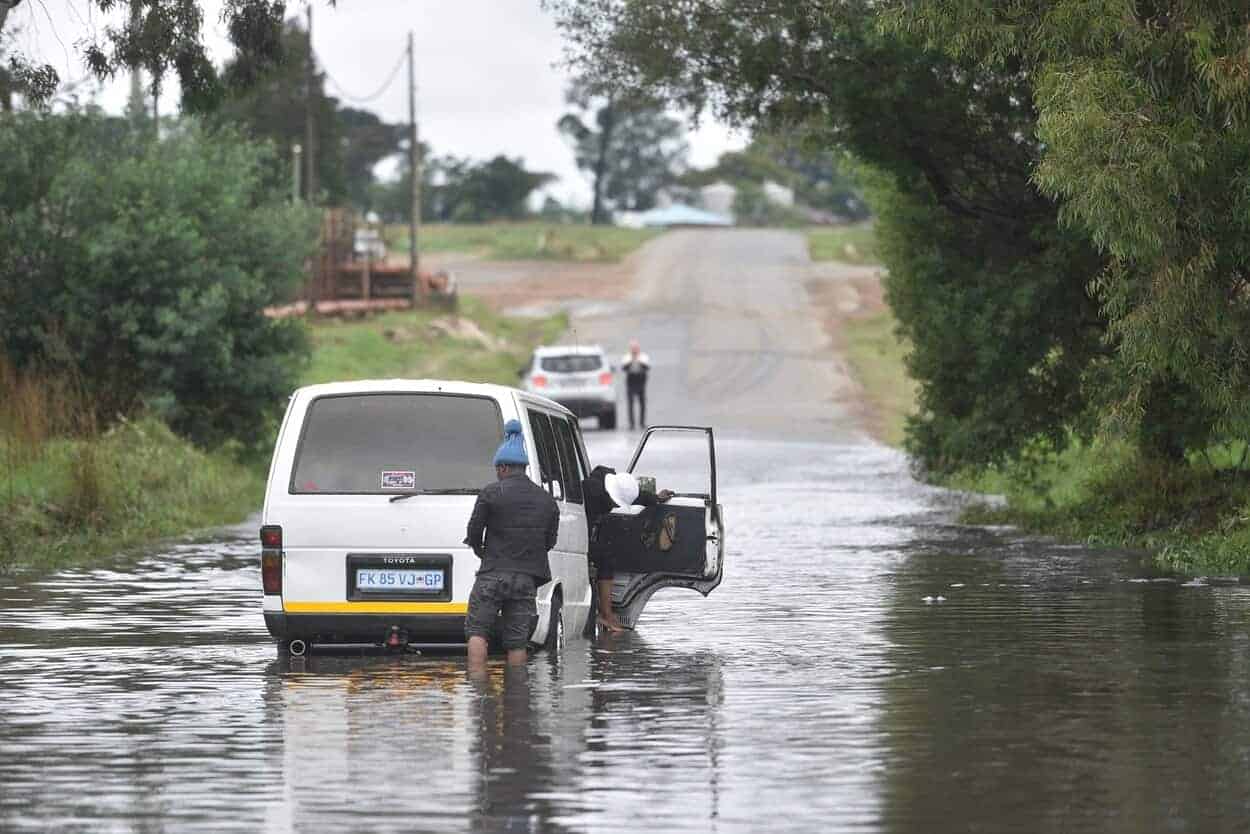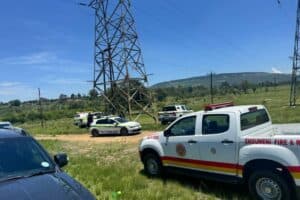Identifying flooding hotspots has not led to preventative measures.

The national Department of Human Settlements has identified specific disaster hotspot areas across South Africa that have experienced repeated flooding and storm incidents, requiring multiple emergency responses year after year.
Deputy Director-General of Affordable, Rental and Social Housing in human settlements, Ngaka Dumalisile, presented the list of hotspots to parliament’s portfolio committee on human settlements on Wednesday, as provinces prepared for what meteorologists predict will be a La Niña summer with increased rainfall.
Highest provincial flooding hotspots
The Western Cape has the highest concentration of identified disaster hotspots, with eight areas requiring regular emergency interventions.
These include:
- Khayelitsha
- Philippi
- Lwandle
- Langa
- Dunoon
- Overcome Heights
- Joe Slovo (Milnerton)
- Wallacedene
- Mfuleni
- Gugulethu
All areas are characterised by dense informal settlements and ageing infrastructure.
“These are the areas that we do expect that the plans from the provinces will actually elevate these areas and plan accordingly so that we can be able to respond speedily and make sure that we assist the affected households,” Dumalisile said.
In the Eastern Cape, disaster hotspots include:
- Duncan Village and Nompumelelo in Buffalo City Metro
- OR Tambo District — Umtata, Port St Johns, and Ingquza Hill
- Bizana Municipality — Winnie Madikizela-Mandela
According to the department, Port St Johns has been particularly problematic, experiencing recurring heavy rains and flooding due to settlements along coastal lines and river banks.
KwaZulu-Natal’s identified hotspots include Kennedy Road and, Masinenge Ray Nkonyeni Municipality, uMlazi in eThekwini Metro.
The province experienced a devastating disaster over the weekend in the Hlanovu and UMzimkhulu areas, where searches continued for two missing family members, and one body had been recovered early in the week.
ALSO READ: KZN floods relief hampered: Foreign nationals not coming forward
Provincial hazard profiles and vulnerable settlements
Head of the Gauteng Provincial Disaster Management Centre, Tshepo Motlhale, highlighted ongoing challenges with settlements around the Jukskei River, which regularly flood during heavy rainfall.
Motlhale highlighted the province’s use of artificial intelligence and data-driven decision-making.
He said the province maintains a mobile application for emergency reporting and has established swift water rescue teams across municipalities.
“This is going to be the year of La Niña, which comes with the larger precipitation of rainfall and also with possible flooding in certain areas,” Motlhale warned, citing meteorological forecasts for November through March 2026.
ALSO READ: Rain rolls in, heat returns: Here is Gauteng’s weekend forecast
Head of CoGHSTA in Limpopo, Dr Modjadji Malahlela, reported that many households in the province are currently affected by disasters.
She said the Capricorn, Mopani and Sekhukhune districts are most susceptible to thunderstorms, whilst the Vhembe and Waterberg districts face significant flood risks.
“We are expecting that around December and January, indeed, we are likely to have floods,” Malahlela said.
Mpumalanga has already recorded 127 damaged houses since the start of summer, with 87 houses affected in Dr JS Moroka municipality just a day before the parliamentary meeting, leaving twenty people displaced.
Acting Head of the Provincial Disaster Management Centre Bongani Ntiwane said the province still has 1 629 outstanding assessment reports from the National Home Builders Registration Council for damaged houses from previous disasters.
Northern Cape faces unique challenges despite being generally arid. Its Head of Department (HOD), Bafedile Lenkoe, explained that flooding of the Vaal River poses particular problems.
“When the Vaal Dam sluice gates are getting opened, it ends up having that challenge downstream around the Orange River,” Lenkoe said.
Meanwhile, the North West province has implemented mapping of flash-flood risk zones and conducted pre-season settlement fire-safety audits in response to recurring disasters.
Kgomotso Mahlobo, the province’s HOD, outlined challenges including summer thunderstorms, flash floods, heat waves and informal settlement fires.
ALSO READ: Crisis averted at the Vaal Dam
48-hour emergency response commitment
The department guaranteed 48-hour response times once disasters are reported.
“From the time a disaster is reported to us, in terms of the grant framework, we guarantee that we’ll be on the ground within 48 hours,” said Director-General of Cogta Dr Mbulelo Tshangana.
He said the department deployed 48 volunteers who have foregone their festive holidays to work as community liaison officers during the summer.
Additionally, two engineers from the Housing Development Agency have been brought on board to augment inspection and certification capacity for Temporary Residential Unit construction.
When disasters strike, the department’s response includes verifying affected beneficiaries, profiling households, and determining appropriate interventions, such as fire kits for informal settlements or temporary residential units for displaced families.
Infrastructure failures worsen flood impact
Multiple provinces identified poor infrastructure maintenance as a significant factor exacerbating flood damage.
“Lack of maintenance of storm water drainage systems becomes a problem due to illegal dumping,” Motlhale said, adding that the province has prioritised clearing coverage in CBD revitalisation programmes.
However, the identification of hotspots has not led to preventive measures.
The department continues responding to the same areas annually, with temporary solutions like Temporary Residential Units rather than permanent relocation or infrastructure upgrades.
MK party MP Saira Abader questioned this approach: “Why do communities remain in the same danger zones year after year? Why are high-risk river banks not formally declared red zones? Why are we able to compensate for disaster damage yet unable to fund relocation and protection before disaster strikes?”
The department revealed plans for a pilot project with the Eastern Cape to provide permanent housing solutions immediately after disasters, potentially breaking the cycle of repeated emergency responses in the same hotspot areas.
The pilot could begin with a few houses this financial year and expand from there next year.
As summer intensifies, emergency services across all identified hotspot areas remain on high alert, with the department deploying additional staff and engineers to augment response capacity during the festive period.
NOW READ: Rising local floods put SA drivers at greater risk






